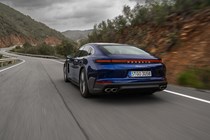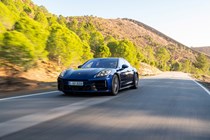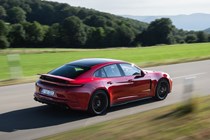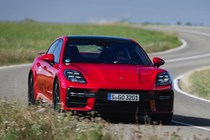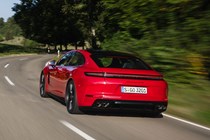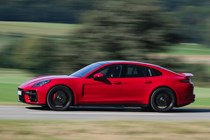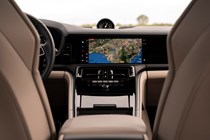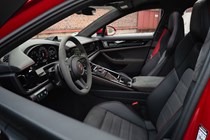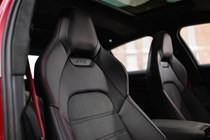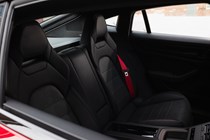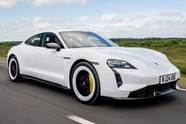
Porsche Panamera review
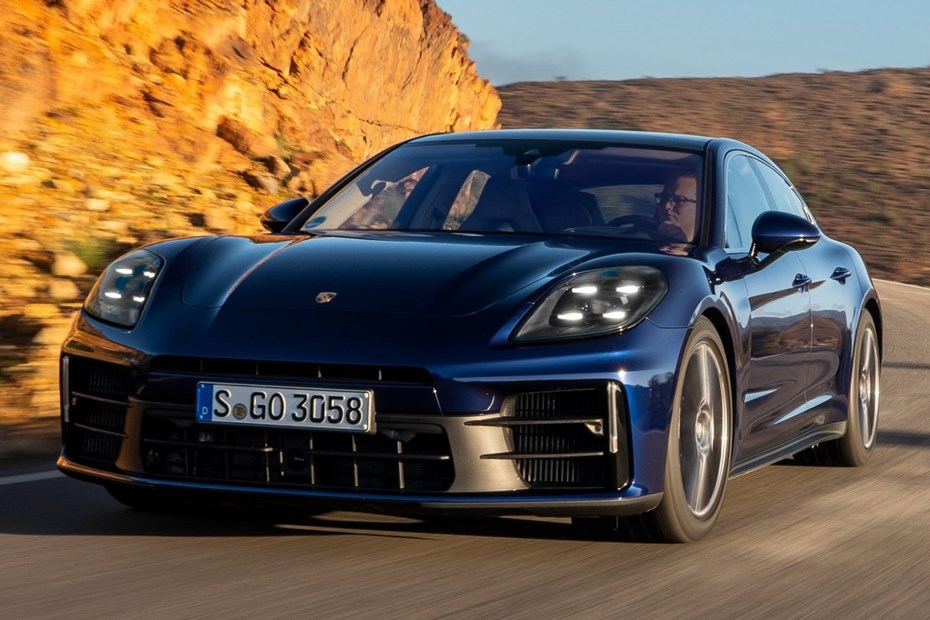
At a glance
| Price new | £92,755 - £176,224 |
|---|---|
| Used prices | £66,040 - £146,631 |
| Road tax cost | £620 |
| Insurance group | 46 - 50 |
Get an insurance quote with

|
|
| Fuel economy | 22.7 - 29.2 mpg |
| Miles per pound | 3.3 - 4.3 |
| Number of doors | 5 |
| View full specs for a specific version | |
Available fuel types
Petrol
Hybrid
Pros & cons
- So agile for a car of its size
- High-end interior
- Excellent plug-in hybrids
- Expensive options
- Estate version no longer available
- Only comes with four seats as standard
Porsche Panamera Saloon rivals
Overview
The Porsche Panamera was introduced in 2009 as the brand’s first foray into the luxury saloon market. It was designed to offer keen drivers a more exciting alternative to the likes of the BMW 7 Series and Mercedes S-Class without compromising on comfort. Porsche pulled it off – and those traits have stuck with the Panamera ever since.
Porsche unveiled the third-generation Panamera earlier this year and, after we cut our teeth on the 4 and Turbo E-Hybrid models at its launch event, we’ve now had a chance to sample the driver-focused GTS model and the utterly ballistic Turbo S E-Hybrid. And, on this drive day, we found our pick of the range.
Despite looking remarkably similar to its predecessor, the new Panamera is quite different to those that came before it. For starters, this Mk3 model is only available as a liftback, whereas the old car was available in Porsche’s Sport Turismo estate trim. It was discontinued due to faltering demand for estates.
Porsche has also made a heap of technological and mechanical improvements. Air springs are now standard across the range and Porsche has even developed a new Active Ride suspension for the plug-in hybrid models that can counteract the G-forces acting on the car when cornering to keep the passengers sitting upright.
It also gets Porsche’s latest infotainment system which (spoiler alert) is fantastic, while the front seat passenger can now have their own infotainment system to watch films as the car drives along.
But is the Panamera worth considering alongside rivals such as the Audi A7, BMW 8 Series Gran Coupe and Mercedes AMG-GT 4-Door? And is it even still relevant now that Porsche is moving to electrify its model range? After all, the Taycan does basically the same thing, just without the petrol engine soundtrack.
Scroll through the next five pages for our insights on the Panamera’s practicality, interior quality, interior technology, driving experience and running costs before reading our final verdict on the car. And if you’d like to learn more about how we reached our decision on this Porsche, check out our how we test cars explainer page.







